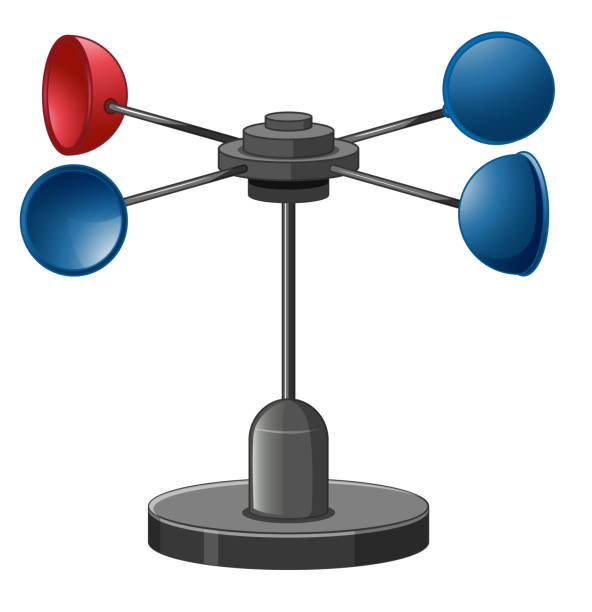The Role of an Anemometer in Improving Security for Outdoor Activities
The Role of an Anemometer in Improving Security for Outdoor Activities
Blog Article
Checking Out the Features and Benefits of Anemometers for Weather Condition Lovers and Experts
From mug anemometers to sonic anemometers, each kind brings its unique set of benefits and applications, losing light on various facets of climatic conditions. As we dig right into the functions and advantages of anemometers, a much deeper understanding arises not just of prevailing climate sensations but additionally of the broader effects for sectors like wind power production and ecological research study.
Importance of Anemometers in Climate Tracking
Anemometers play a crucial role in weather monitoring by supplying precise dimensions of wind speed, aiding in projecting and understanding weather condition patterns. These tools, ranging from typical mug anemometers to contemporary ultrasonic anemometers, are necessary for meteorologists, scientists, and weather lovers alike.

Kinds Of Anemometers and Their Applications
The most usual types of anemometers include mug anemometers, vane anemometers, hot-wire anemometers, and ultrasonic anemometers. Cup anemometers consist of three or 4 cups installed on straight arms that turn with the wind, measuring its rate. Vane anemometers, on the other hand, utilize a freely turning vane to straighten with the wind instructions, giving both wind speed and instructions measurements.
Each kind of anemometer has its unique advantages and applications. Cup anemometers are ideal and durable for general weather condition tracking, while vane anemometers are favored for directional measurements. Hot-wire anemometers are delicate to low air rates, making them suitable for interior settings. Ultrasonic anemometers are non-intrusive and offer high precision, frequently made use of in study and specialized weather condition monitoring applications. Understanding the characteristics and applications of each kind of anemometer is crucial for choosing the most suitable tool for specific weather condition keeping track of requirements.
Advantages of Utilizing Anemometers in Projecting
In meteorology, the application of anemometers uses indispensable advantages for enhancing the precision of climate projecting. Anemometers measure wind speed and direction, supplying vital data for forecasting weather condition patterns. By including wind information into projecting designs, meteorologists can better understand the movement of weather condition systems, prepare for adjustments in weather, and concern extra exact forecasts.
Moreover, anemometers play a crucial function in assessing potential climate hazards. Monitoring wind speeds assists forecasters predict extreme weather events such as cyclones, tornadoes, and winter months storms with better precision. This very early warning system allows authorities to release timely notifies and execute needed safety and security measures, minimizing the threats to life and residential or commercial property.
In addition, anemometers help in enhancing renewable resource production. By examining wind patterns, meteorologists can identify appropriate locations for wind ranches and anticipate energy outcome, adding to the effective generation of wind power.

Anemometers in Wind Power Manufacturing
Offered the critical role anemometers play in supplying precise wind data for climate forecasting and hazard assessment, their significance prolongs to the world of wind power production. Anemometers are important tools in the field of wind energy, where the measurement of wind rate and instructions is crucial for establishing the feasibility and performance of wind turbine installations. By precisely gauging wind speeds at differing heights, anemometers help maximize the placement and style of wind generators to optimize energy result.
In wind farms, anemometers are strategically put to gather real-time wind data that is made use of to analyze the possible energy manufacturing of a site. This information is instrumental in figuring out Visit Website the financial stability of wind power jobs and in forecasting energy generation to ensure grid security. In addition, anemometers aid in keeping track of wind conditions to maximize wind turbine performance, prevent damages from high winds, and guarantee the safety of employees operating in the vicinity of wind generators.
Enhancing Weather Recognizing With Anemometers

Anemometers play a key duty in enhancing our understanding of microclimates. These local climate conditions can differ substantially from broader regional forecasts, making it necessary to have accurate data for particular areas. anemometer. By strategically positioning anemometers in numerous places, scientists can gather detailed info on exactly how wind behaves in different surfaces, metropolitan atmospheres, or bodies of water
Furthermore, anemometers add to improving weather projecting designs by offering real-time data on wind behavior. This details is particularly beneficial for anticipating extreme climate events, enhancing agricultural practices, and sustaining industries like aviation and maritime navigating. On the whole, anemometers are indispensable instruments that allow us to delve deeper into the intricacies of weather condition systems, inevitably resulting in even more better-informed decisions and exact check predictions.
Conclusion
In final thought, anemometers play a critical function in weather tracking and projecting by determining wind rate and direction. They are essential tools utilized by weather condition enthusiasts and professionals to collect exact information for predicting climate patterns and examining prospective influences. Anemometers also have applications in wind energy manufacturing, more highlighting their importance in both weather forecasting and renewable resource industries. In general, anemometers contribute to boosting our understanding of weather phenomena and boosting projecting capacities. anemometer. learn the facts here now
From cup anemometers to sonic anemometers, each type brings its distinct set of advantages and applications, losing light on different elements of climatic conditions. These tools, varying from standard cup anemometers to contemporary ultrasonic anemometers, are necessary for meteorologists, researchers, and climate enthusiasts alike. The most usual types of anemometers consist of mug anemometers, vane anemometers, hot-wire anemometers, and ultrasonic anemometers. Mug anemometers are robust and appropriate for general weather monitoring, while vane anemometers are favored for directional dimensions. Anemometers are vital instruments in the area of wind power, where the measurement of wind rate and direction is critical for establishing the expediency and efficiency of wind generator installments.
Report this page